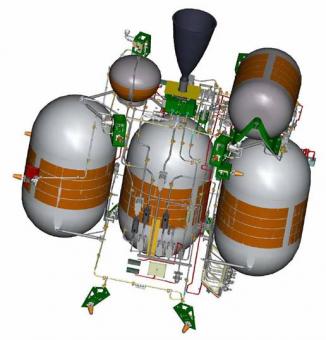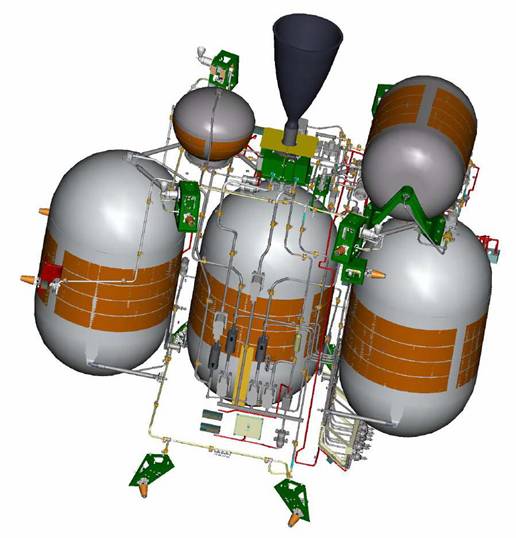Spacecraft Propulsion System Sizing Tool
UAH's Spacecraft Propulsion System Sizing Tool produces a quick and accurate mass estimate of a candidate spacecraft propulsion system.
Historically, the propulsion system of a spacecraft can be 25-50% of the spacecraft wet mass (the spacecraft's mass before liftoff). Understanding the mass of the propulsion system early in the design process gives spacecraft mission planners a better understanding of the amount of mass that can be allocated to the other spacecraft subsystems (power, telecommunications, scientific payload, etc.), providing them with insight into the system-level effect a candidate propulsion technology imparts on the overall spacecraft propulsion system.
The Spacecraft Propulsion System Sizing Tool (SPSST) is an initial design tool that provides users the estimated mass of a spacecraft propulsion system. The estimation model is based on both physics-based equations and engineering mass estimating relationship equations. Initial inputs to the model include the mission profile (mass, velocity change, and thermal environment of a mission of interest) and selected subsystem options (such as propellant residuals and feed system pressure changes). There are nine subsystems in the model, including main propellant tanks, main propellant pressure system, main engines, cabling, pressure and propellant control and distribution, attitude control system, cryocooler, structure, and thermal. A unique feature of the model is that it currently can assess eight different propellant combinations at once, allowing for a comparison of the system masses of different propellant combinations for a given mission profile. The output of the model includes the overall spacecraft propulsion system mass as well as the payload (the other subsystems of the spacecraft) mass given a selected mission profile of interest.
The model begins by calculating the required propellant load for the mission profile. This load is then applied to the main propellant tank subsystem to determine the number, size, material type (metallic or composite overwrap), and mass of the main propellant tanks. Knowing the main propellant tanks allows the pressurization system to be sized. Currently the model only provides for a pressure-fed pressurization system. Once the pressurization system is calculated, the model can determine the other subsystems in rapid succession since the other subsystems support either the main propellant tank subsystem or the pressurization subsystem. Summing the masses of each of the subsystems and applying an appropriate mass margin, the overall spacecraft propulsion system mass for the mission profile selected is calculated. Taking the initial mass determined for the spacecraft and subtracting the propulsion system mass gives the spacecraft propulsion system payload mass that can then be allocated to the other spacecraft subsystems for the mission.
SPSST has been created with the support of the NASA In-Space Propulsion Technology Projects Office and the NASA Spacecraft Propulsion Systems Branch at the Marshalll Space Flight Center. Several modifications and improvements to the model were developed including adding a heuristic search as well as a spacecraft propulsion systems database.






